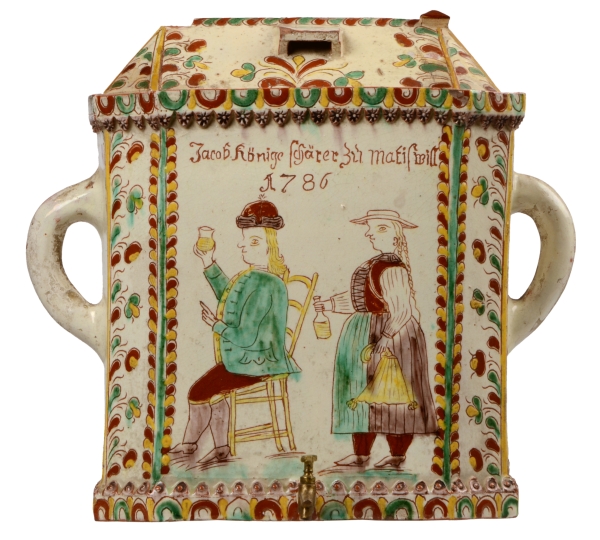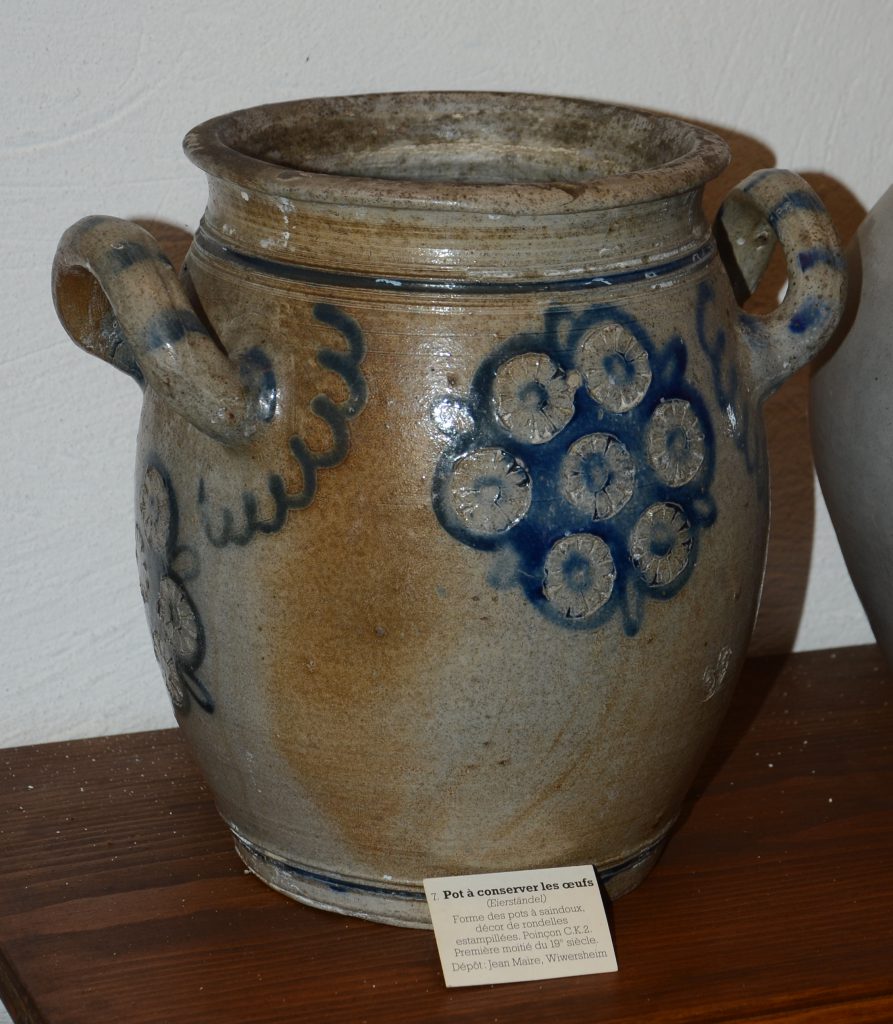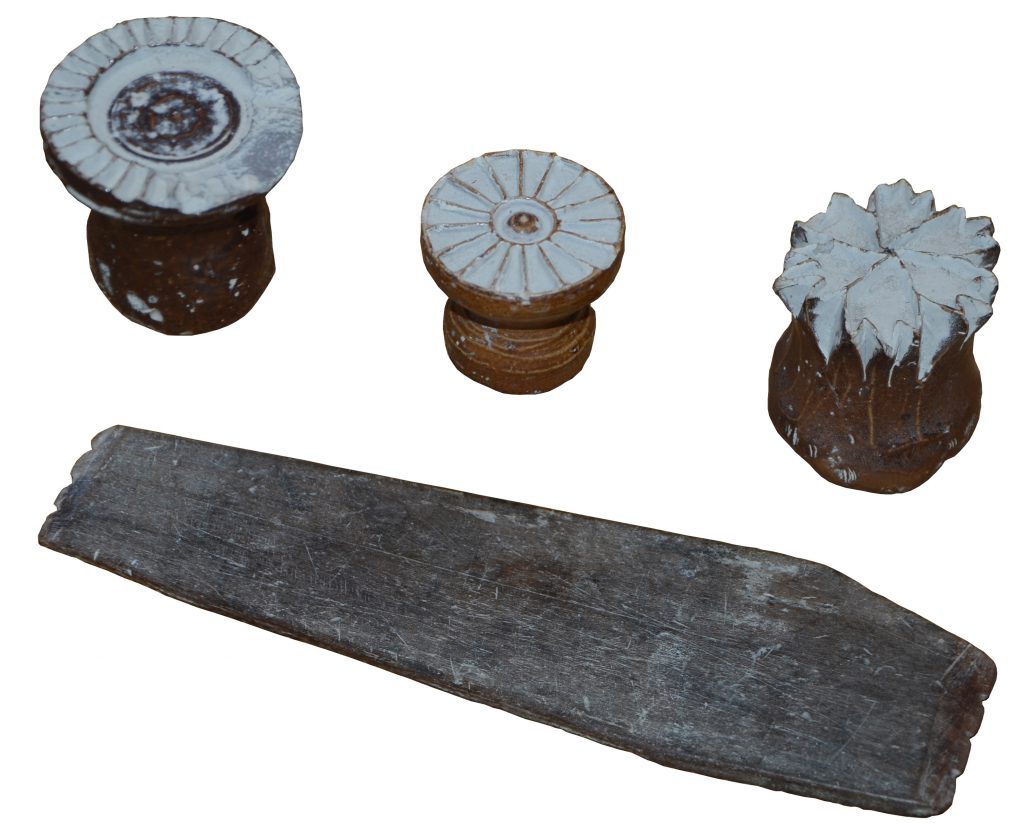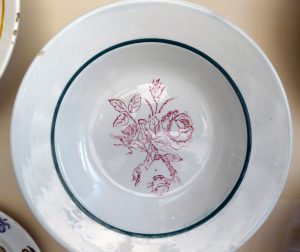
Wall fountain with stamped decoration on both serrated edges, from Langnau in the Canton of Bern, 1786.
Patterns created by impressing (stamping) individual stamps or roulettes made of wood, pottery or metal into the clay, belong to the group of decorations that involve displacing the clay. Using individual stamps results in what is known as stamped decoration, while using a roulette creates rouletted decoration.

Stoneware with stamped decoration from Oberbetschdorf in the Alsace region.
Stamped decoration was used on various pottery types, including earthenware, stoneware and refined white earthenware. Some of the patterns were characteristic of particular periods and can therefore be chronologically relevant.

Stamps rarely survive. These examples were made of pottery and were used in the 19th century to decorate stoneware from Betschdorf in the Alsace region. The flat tool in front is a wooden stamp, typically used to create rocker-stamped decoration, a special type of stamped decoration.
Another special type of stamped decoration was made using rubber stamps. It should be treated as distinct from stamped decoration and always termed rubber-stamped decoration.


Rubber-stamped decoration and rubber stamp made of caoutchouc (natural rubber), Varages, France 2019.
From the late 19th century, when latex, caoutchouc and rubber were first discovered, vessels were also decorated using soft rubber stamps or roulettes (on the technique see Gauvin/Becker 2007, 27, 36). The patterns were stamped onto the surface of the vessel, either before or after glazing.
Translation Sandy Haemmerle
German: Stempeldekor
French: décor au tampon, décor estampé, décor à l’estampille, décor avec empreintes au cachet, décor avec empreintes au gabarit, décor au poinçon
References:
Blondel 2001
Nicole Blondel, Céramique: vocabulaire technique, Paris 2001, besonders 198-199, 332.
Gauvin/Becker 2007
Henri Gauvin/Jean-Jacques Becker, Cent ans de faïences populaires pentes à Sarreguemines et à Digoin, Sarreguemines 2007.

